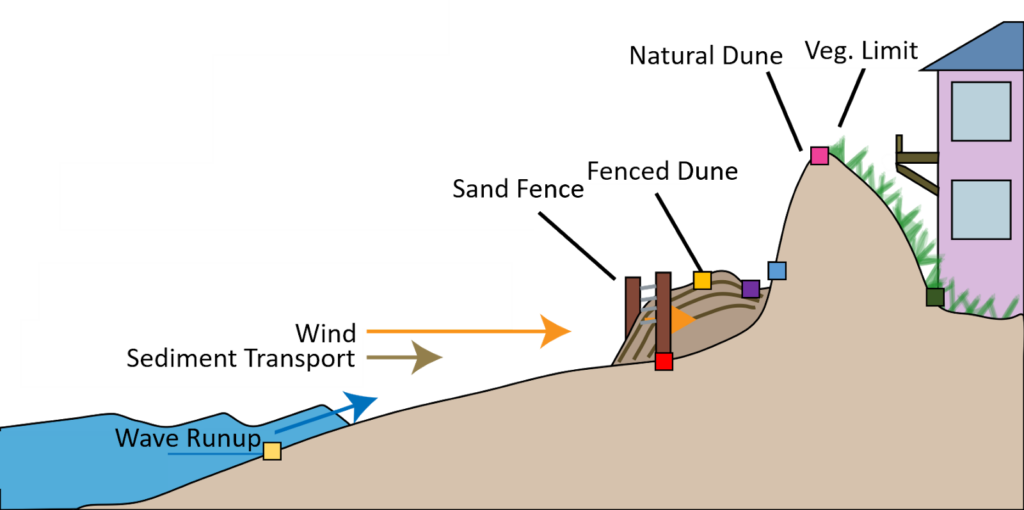
The Effect of Sand Fencing on the Structure of Natural Dune Systems NCCOS Coastal Science Website
HSW. A sand dune needs the following three things to form: A large amount of loose sand in an area with little vegetation -- usually on the coast or in a dried-up river, lake or sea bed. A wind or breeze to move the grains of sand. An obstacle that causes the sand to lose momentum and settle. This obstacle could be as small as a rock or as big.

An Introduction to Physical Geology In the Playground of Giants Geology, Physics, Outer core
1 Altmetric Metrics Abstract New evidence indicates that sand availability does not only control dune type but also the underlying dune growth mechanism and the subsequent dune orientation.

Coastal Sand dunes YouTube
A Sand Dune is a small ridge of hill of sand found in a desert or on top of a beach. When they form on a beach, they are typically above the normal maximum reach of the waves. They form from millions of finely divided sand particles that are blown by the wind and get deposited against some obstacle such as a piece of drift wood, bush or rock.

Dune, Morden, The originals
Dune dynamics . How do hydrologic factors affect dune construction? Microenvironment Species diversity and productivity . Plant and animal success .. Carrying capacity and its application to sand dune management Limiters Nutrlents Light. Storage 2. Modulators . Physical suitability, Ground water fluctuatilons Vegetation ..

Schematic diagram of the coastal sand dune showing the sampling points... Download Scientific
Sand dune habitats are one of the most natural remaining vegetation types in the UK. They support more than 70 nationally rare or red-data book species, and are a refuge for many lowland species lost due to agricultural improvement.
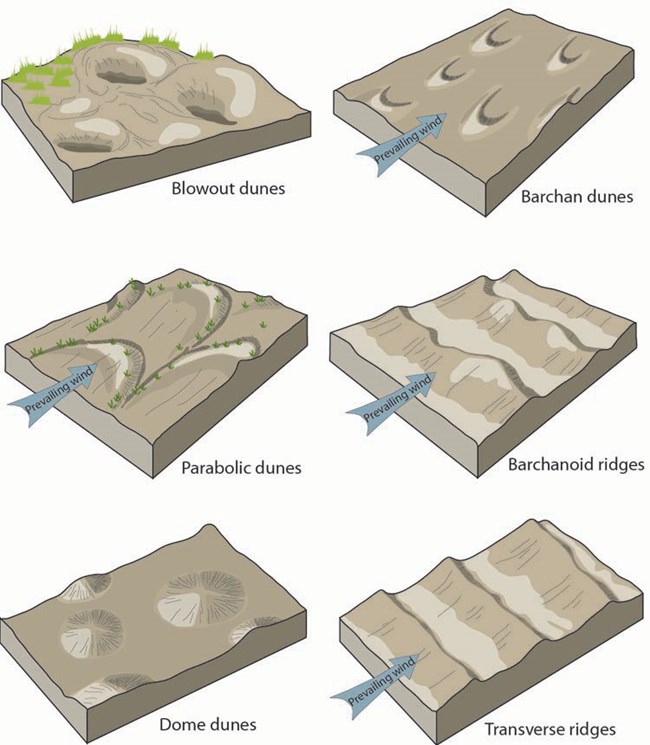
Aeolian (Dunes) Landforms Geology (U.S. National Park Service)
Furthermore, we study the phase diagram of linear dunes for the two dune growth mechanisms. Whereas linear dunes systematically occur in the bed instability mode, the dune morphology in the fingering mode exhibits transitions from barchans to linear dunes, and vice versa.. The role of streamline curvature in sand dune dynamics: evidence from.

How are Sand Dunes formed on a coast? Labelled diagram and explanation YouTube
The Great Sand Dunes originated from large lakes that once covered portions of the San Luis Valley. This brief animation shows the lakes drying up, and the dunefield emerging in a pocket of the Sangre de Cristo Mountains. The tallest dunes in North America make a dramatic contrast with the alpine peaks of the Sangre de Cristo Mountains.

Morphology of sand dune (modified after... Download Scientific Diagram
Sand dunes are among the most widespread aeolian features present on Mars, serving as unique indicators of the interaction between the atmosphere and surface. On a planetary body, dunes accumulate where a supply of sand-sized grains exists or may be abraded, is carried downwind by winds of saltation strength, and is subsequently deposited where.

Get Started EcoShape
Sand dunes are ridges or hills of sand found at the top of a beach, above the usual maximum reach of the waves. How are sand dunes formed? The conditions required for sand dune formation are: a large supply of sand a large flat beach time for the sand to dry, so an extensive tidal range is needed

Diagram showing barchan dune formation, with the wind blowing from the left Earth science
How and why do abiotic factors vary? What evidence is there for deflected succession? A good investigation will make links between different parts of the A-Level Biology specification. Here are some possible synoptic links for investigations into sand dunes. r and K strategies - pioneers are r-selected while climax plants are more K-selected
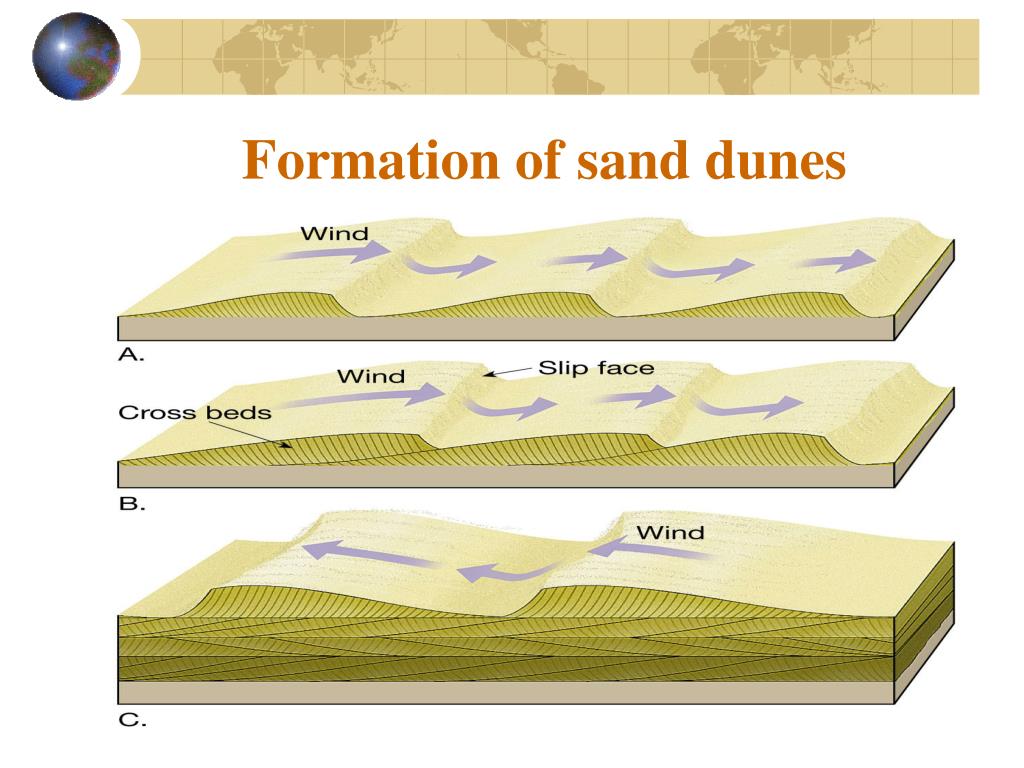
PPT Deserts and Winds PowerPoint Presentation, free download ID757038
The most complex dune type which the park is known for is star dunes. These dunes form when complex wind patterns alternate direction and change the way sand is piled onto the dune. By changing wind direction, the sand piles up on multiple sides of the dune and is unable to reach the angle of repose so the dune never collapses. This is how the.

GC582EB Scott Creek Aeolian Transport (Earthcache) in California, United States created by TerryDad2
This video explains the formation of a coastal sand dune system and the change from embryo dunes all the way to the mature dunes at the back of the beach. Th.

IELTS Sand Dunes Diagram Writing Task 1
Sand dunes are large piles of sand that form at the back of sandy beaches. What conditions do sand dunes need to form? Sand dunes need the following. large wide flat beach plenty of sand big tidal range, so there is enough time for the sand to dry before the tide comes in again onshore winds so sediment can be moved to the back of the beach
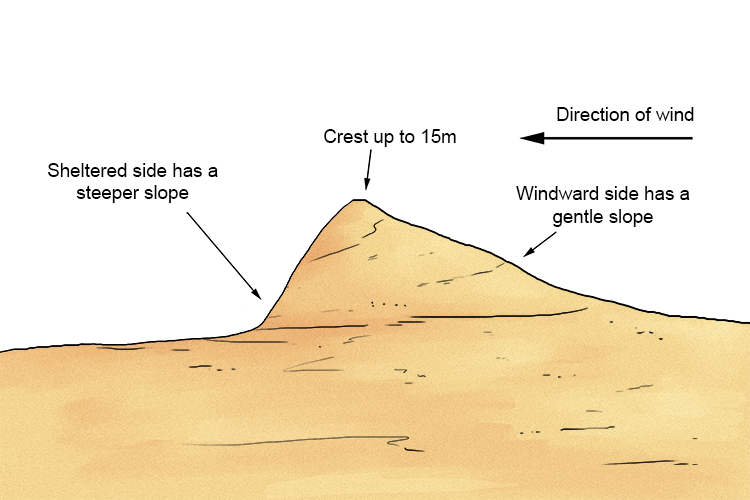
Sand Dune Geography Mammoth Memory Geography
Perched dunes occur on the Sleeping Bear Plateau, Empire Bluffs, Pyramid Point and the west coast of South Manitou Island. The perched dunes of the Sleeping Bear Plateau are actually a relatively thin blanket of wind-blown sand resting on a thick deposit of sandy glacial debris. When the wind reworks the upper layers of glacial sediment, sand.
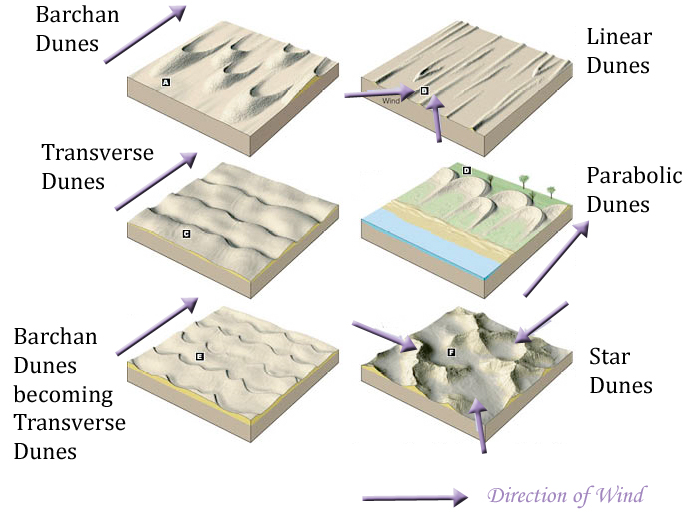
What are the different types of sand dunes? Socratic
Article Vocabulary A dune is a mound of sand formed by the wind, usually along the beach or in a desert. Dunes form when wind blows sand into a sheltered area behind an obstacle. Dunes grow as grains of sand accumulate. Every dune has a windward side and a slipface.
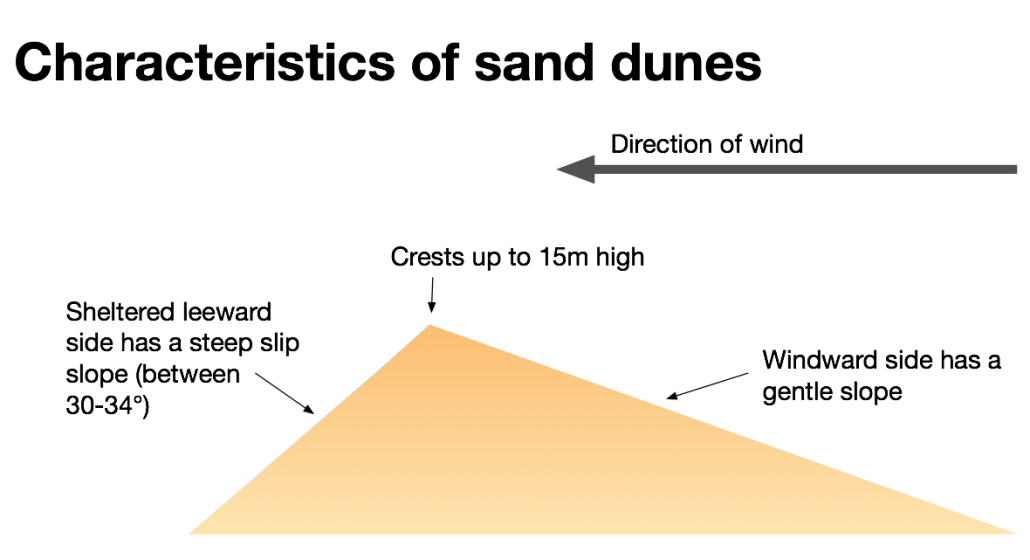
How are sand dunes formed? Geography
Sand dunes are separated by dips, called dune slacks. Slacks are formed in two ways - either when a new dune ridge forms in front of a low-lying area which cuts it off from the sea, or when a dune blowout forms in an area that's got lots of vegetation, exposing a dip of bare sand. Where these low areas are low enough to meet the dune water.